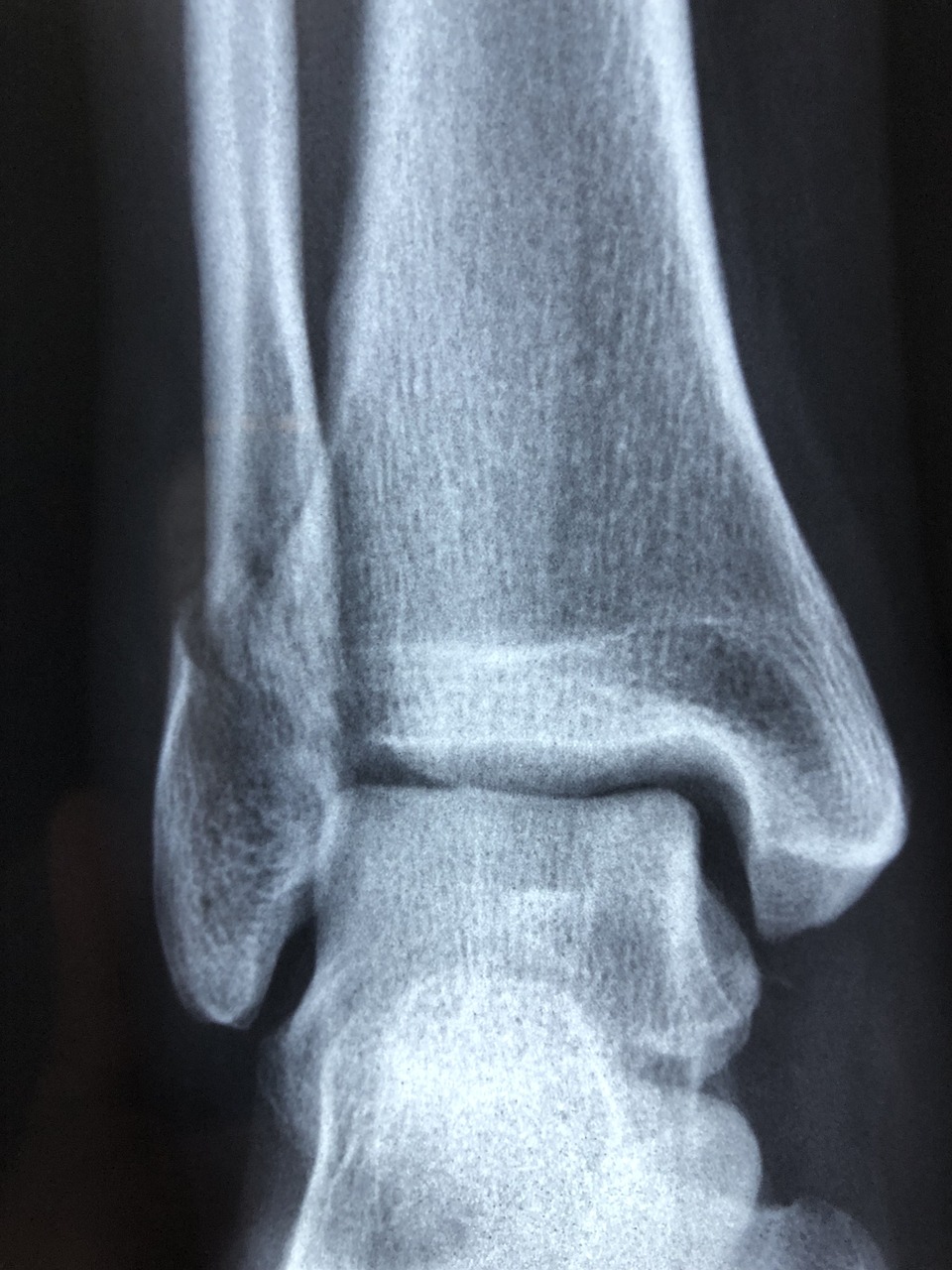Profile of Patients with Decreased Bone Density Aged Over 50 Years Old with Cases of Femoral Neck Fracture, Thoracic Vertebral Compression Fracture, Lumbar Vertebral Compression Fracture, and Distal Radius Fracture in Dr. Soetomo General Academic Hospital, Surabaya, Indonesia, in 2019-2020

Downloads
Highlights:
Decreased bone density often progresses to osteoporosis, where osteoporosis is a degenerative disease characterized by low bone mass, bone tissue damage, and bone microarchitecture disorders that can lead to an increased risk of bone fracture.
- Fractures often found in low bone density consist of fractures of the femoral neck, the thoracic and lumbar vertebrae, and distal radius fractures.
Abstract
Introduction: Human life expectancy will increase over time, as will various chronic degenerative diseases, one of which is fracture caused by decreased bone mass density. This study described fracture features associated with decreased bone mass density in patients over 50 years old.
Methods: This study took place at the Polyclinic of Orthopaedics and Traumatology Dr. Soetomo General Academic Hospital, Surabaya, Indonesia, using a quantitative design with a cross-sectional approach. The sample in this study consisted of 56 medical records collected using a questionnaire processed with Microsoft Excel.
Results: This study used 56 samples. Femoral neck fractures had the highest number of decreased bone mass density fractures (69.7%). The most common body mass index (BMI) found with fractures was obese patients (32.2%). Most fractures were experienced by females (64.3%). The location of the highest incidence of fractures was found in domestic accidents (66.1%) with low-energy trauma (67.9%).
Conclusion: Most of the fractures caused by decreased bone density in Dr. Soetomo General Academic Hospital, Surabaya, Indonesia, were femoral neck fractures, with females being the most common gender. These fractures were also the most common in obese patients, and the highest incidence was found in domestic accidents with low-energy trauma.
Guo J, Huang X, Dou L, Yan M, Shen T, Tang W, et al. Aging and Aging-Related Diseases: From Molecular Mechanisms to Interventions and Treatments. Signal Transduct Target Ther 2022; 7: 391. [PubMed]
Park H, Yang H, Heo J, Jang HW, Chung JH, Kim TH, et al. Bone Mineral Density Screening Interval and Transition to Osteoporosis in Asian Women. Endocrinol Metab (Seoul, Korea) 2022; 37: 506–512. [PubMed]
Gomez-Vaquero C, Valencia L, Nolla J, Boquet D, Pardo SM, Grigorov MM, et al. The Incidence of Clinical Fractures in Adults Aged 50 Years and Older in Spain. Rheumatol Adv Pract; 4. 1 July 2020. [ResearchGate]
Adhikari S, Ismail IM. A Study on Domestic Accidents among Women in a Coastal Area of Mangaluru, Karnataka. Cureus 2022; 14: e30605. [PubMed]
Lecky FE, Otesile O, Marincowitz C, Majdan M, Nieboer D, Lingsma HF, et al. The Burden of Traumatic Brain Injury from Low-Energy Falls among Patients from 18 Countries in the CENTER-TBI Registry: A Comparative Cohort Study. PLoS Med 2021; 18: e1003761. [PubMed]
Han S, Park J, Nah S, Jang HD, Han K, Hong JY. Severity of Underweight and Risk of Fracture: A Korean Nationwide Population-Based Cohort Study. Sci Rep 2022; 12: 10153. [PubMed]
Hua Y, Fang J, Yao X, Zhu Z. Can Waist Circumference be a Predictor of Bone Mineral Density Independent of BMI in Middle-Aged Adults? Endocr Connect 2021; 10: 1307–1314. [PubMed]
Haseltine KN, Chukir T, Smith PJ, Jacob JT, Bilezikian JP, Farooki A. Bone Mineral Density: Clinical Relevance and Quantitative Assessment. J Nucl Med 2021; 62: 446–454. [PubMed]
Gong JH, Azad CL, Zhang G, Aliu O, Giladi AM. Bone Health Screening Prior to Medicare Eligibility-Osteoporosis Screening and Fracture Prevention after Distal Radius Fractures in Patients Aged 50-59. J Hand Surg Am 2024; 49: 203–211. [PubMed]
Birabaharan M, Kaelber DC, Karris MY. Bone Mineral Density Screening among People with HIV: A Population-Based Analysis in the United States. Open Forum Infect Dis 2021; 8: ofab081. [PubMed]
Wang X, Cheng Z. Cross-Sectional Studies. Chest 2020; 158: S65–S71. [PubMed]
Putri SN, Santoso B, Budiono B. Sedentary Lifestyle and Overweight in Relation to the Risk of Polycystic Ovary Syndrome in Senior High School Students in Surabaya. JUXTA J Ilm Mhs Kedokt Univ Airlangga 2022; 13: 57–61. [Journal]
Gates B, Allen P. Excel, (2021). [Website]
Fischer H, Maleitzke T, Eder C, Ahmad S, Stöckle U, Braun KF. Management of Proximal Femur Fractures in the Elderly: Current Concepts and Treatment Options. Eur J Med Res 2021; 26: 86. [PubMed]
Vordemvenne T, Wähnert D, Klingebiel S, Lohmaier J, Hartensuer R, Raschke MJ et al. Differentiation of Traumatic Osteoporotic and Non-Osteoporotic Vertebral AO A3 Fractures by Analyzing the Posterior Edge Morphology-A Retrospective Feasibility Study. J Clin Med; 9. December 2020. [PubMed]
Raichandani K, Agarwal S, Jain H, Bharwani N. Mortality Profile after 2 Years of Hip Fractures in Elderly Patients Treated with Early Surgery. J Clin Oorthopaedics Trauma 2021; 18: 1–5. [PubMed]
Anthamatten A, Parish A. Clinical Update on Osteoporosis. J Midwifery Womens Health 2019; 64: 265–275. [PubMed]
Paramita S, Yamazaki Kobayashi C, Koyama H. Determinants of Life Expectancy and Clustering of Provinces to Improve Life Expectancy: An Ecological Study in Indonesia. BMC Public Health; 20. 18 March 2020. [ResearchGate]
Ha J, Baek KH. Body Mass Index at the Crossroads of Osteoporosis and Type 2 Diabetes. The Korean Journal of Internal Medicine 2020; 35: 1333–1335. [PubMed]
Rinonapoli G, Pace V, Ruggiero C, Ceccarini P, Bisaccia M, Meccariello L, et al. Obesity and Bone: A Complex Relationship. Int J Mol Sci; 22. December 2021. [PubMed]
Gariballa S, Alkaabi J, Yasin J, Al Essa A. Total Adiponectin in Overweight and Obese Subjects and Its Response to Visceral Fat Loss. BMC Endocr Disord; 19. 3 June 2019. [ResearchGate]
Tai TY, Chen CL, Tsai KS, Tu ST, Wu JS, Yang WS. A Longitudinal Analysis of Serum Adiponectin Levels and Bone Mineral Density in Postmenopausal Women in Taiwan. Sci Rep 2022; 12: 8090. [PubMed]
Picó C, Palou M, Pomar CA, Rodríguez AM, Palou A. Leptin as a Key Regulator of the Adipose Organ. Rev Endocr Metab Disord 2022; 23: 13–30. [PubMed]
Zhang Y, Liang J, Liu P, Wang Q, Liu L, Zhao H. The RANK/RANKL/OPG System and Tumor Bone Metastasis: Potential Mechanisms and Therapeutic Strategies. Front Endocrinol (Lausanne) 2022; 13: 1063815. [PubMed]
Chin KY, Wong SK, Ekeuku SO, Pang KL. Relationship between Metabolic Syndrome and Bone Health - An Evaluation of Epidemiological Studies and Mechanisms Involved. Diabetes Metab Syndr Obes 2020; 13: 3667–3690. [PubMed]
Sharma M. Reproductive Correlates of Natural Age at Menopause: A Study on the Minyong of Arunachal Pradesh. Orient Anthropol A Bi-annual Int J Sci Man 2019; 19: 0972558X1983538. [ResearchGate]
Shashikantha SK, Huchchannavar R, Jindal HA. Unintentional Domestic Injuries among Elderly in Rural Areas of Mandya: A Community-Based Cross-Sectional Study in Southern Karnataka. J Fam Med Prim Care 2023; 12: 727–733. [PubMed]
van der Vet PCR, Kusen JQ, Rohner-Spengler M, Link BC, Houwert RM, Knobe M, et al. Fear of Falling, Recurrence of Falls, and Quality of Life in Patients with a Low Energy Fracture-Part II of an Observational Study. Medicina (Kaunas); 57. June 2021. [PubMed]
Zhu Y, Xing X, Liu S, Chen W, Zhang X, Zhang Y. Epidemiology of Low-Energy Wrist, Hip, and Spine Fractures in Chinese Populations 50 Years or Older: A National Population-Based Survey. Medicine (Baltimore) 2020; 99: e18531. [PubMed]
Gutiérrez-González R, Ortega C, Royuela A, Zamarron A. Vertebral Compression Fractures Managed with Brace: Risk Factors for Progression. Eur Spine J; 32. 26 August 2023. [ResearchGate]
Copyright (c) 2025 Arlingga Pratama, Gadis Meinar Sari, Dwikora Novembri Utomo

This work is licensed under a Creative Commons Attribution-ShareAlike 4.0 International License.
1. The journal allows the author to hold the copyright of the article without restrictions.
2. The journal allows the author(s) to retain publishing rights without restrictions
3. The formal legal aspect of journal publication accessibility refers to Creative Commons Atribution-Share Alike 4.0 (CC BY-SA).




























